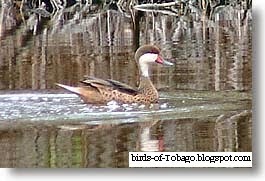 |
| White-lined Tanager (Tachyphonus rufus) |
Order : Passeriformes
Also known as Passerines or perching birds. Any member of the largest avian order which includes more than 5,700 species, more than half of all living birds. Passerines are true perching birds with four toed feet, three toes facing forward and one larger toe facing backwards.
Family : Tanagers (Thraupidae)
The Tanagers are a large group of over 200 species of songbirds of new world forests and gardens mainly in the tropics. Many are brightly coloured. They range in size from 10 - 20 cm ( 4 - 8 in ), and most are arboreal, living in trees, undergrowth and shrub. The diet consists mainly of fruit, though some species eat insects.
Name : White-lined Tanager (Tachyphonus rufus)
Length : 18 cm ( 7½ in )
Local Names : Parson
The white-lined Tanager inhabits suburban areas and light woodland and forest edges where it feeds on fruit, nectar and insects. The male is a glossy black all over with a small patch of white on the underwing covets which are best observed when the bird is in flight, and has a partially white lower mandible. The female is entirely rufus brown. The pair are usually seen together. The nest is a large cup of leaves, usually situated in thick vegetation.
#White-lined Tanager Tachyphonus rufus Tanagers Thraupidae Passeriformes birds of the West Indies birds of Trinidad & Tobago birds of Tobago birds
Bird identification images
 |
| White-lined Tanager (Tachyphonus rufus) female |





























